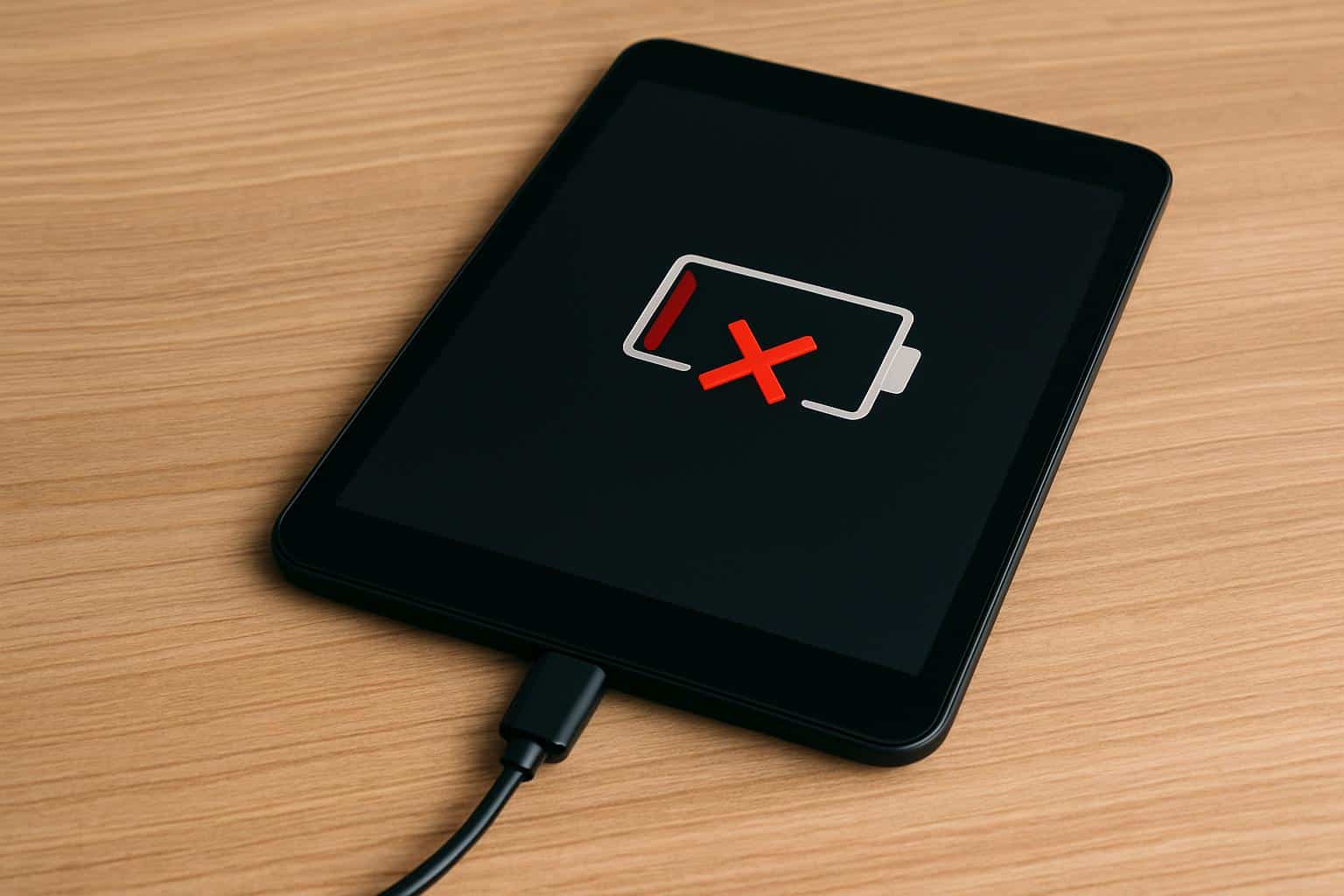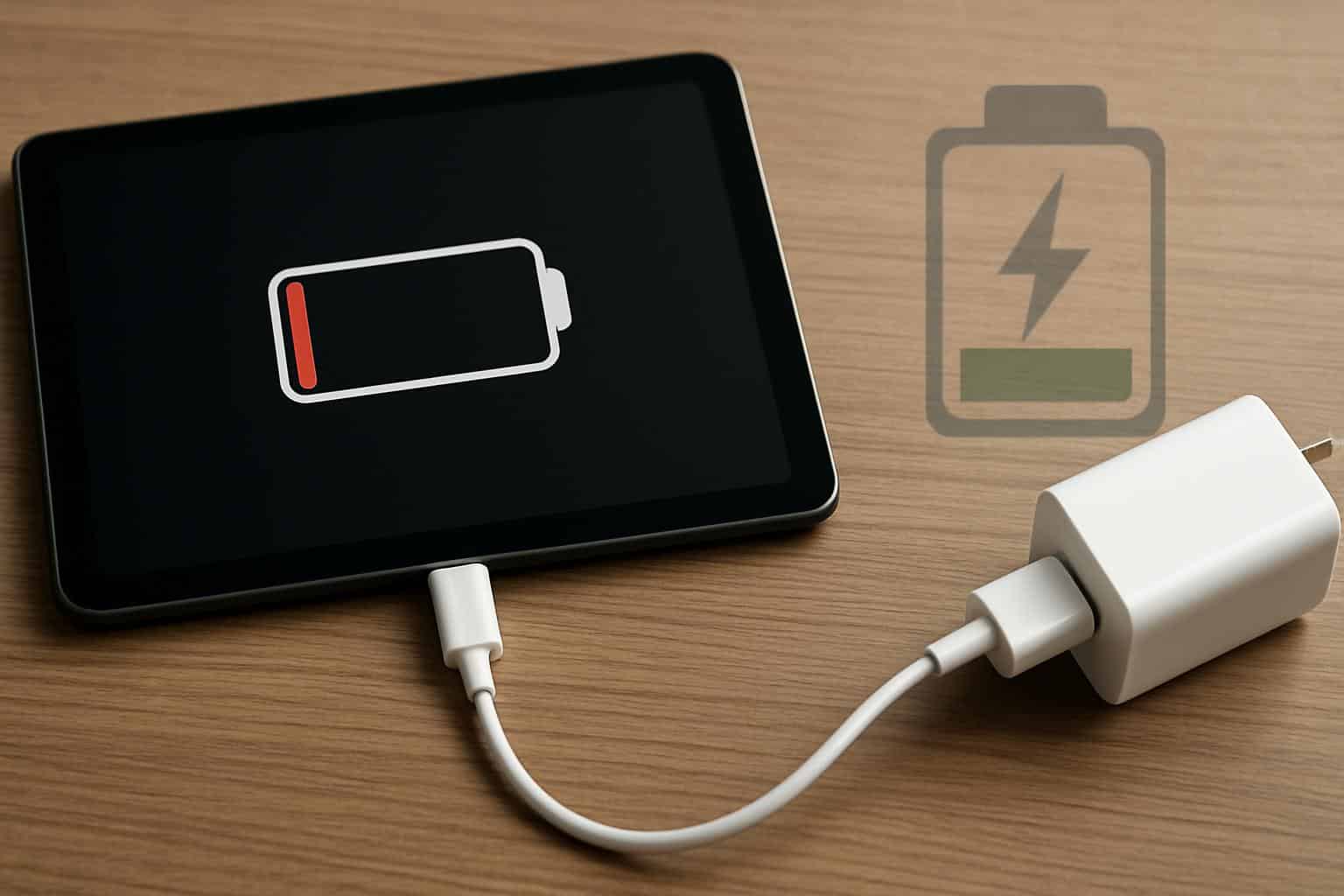Your tablet’s battery isn’t dying of old age in isolation. It’s the way you charge it. Small, repeated stresses — sleeping at 100%, draining it until it hits zero, or using a bargain-bin charger — quietly shave months from its life. The solution isn’t that difficult, and it begins with an understanding of what lithium-ion batteries want (and don’t).
Why Charging Habits Matter for Tablet Battery Lifespan
Contemporary tablet computers utilize lithium-ion cells that degrade from chemical reactions exacerbated by heat, high voltage, and over-discharge. Manufacturers commonly specify batteries to retain around 80% of their original capacity after you’ve put them through, say, 500 or a thousand full charge cycles (the inevitable “departure from the nest” varies by device), but bad charging habits can prompt that cliff much sooner. According to research cited by Battery University, if you’re regularly keeping a lithium-ion cell at 100% and/or warm, it can double how quickly the capacity of the cell degrades compared with storing it at a lower charge level or temperature. Both the U.S. Department of Energy and the National Renewable Energy Laboratory have fingered those two same culprits — high state of charge and high temperature.

Mistake 1: Leaving It Plugged In Overnight
When your tablet artificially sits at 100%, the battery remains at a high voltage and ages quickly. And even with smart charging controllers, that top-off throughout the night (aka trickle charging) leaves your chemistry under stress — and if your device is warming up in a pillow or case, this stresses it further.
How to avoid it: Make use of “Optimized Charging” features where they’re available — iPads learn your routine in order to hold off fully charging until just before you wake, and many Samsung Galaxy tablets include a “Protect Battery” mode that caps charging at around 85%. If your slate doesn’t offer you such choices, then unplug at around 80–90% for daily use; don’t put the device in a case while it’s charging so that heat can escape.
Mistake 2 – Draining to Zero and Parking It Empty
Running a lithium-ion battery to actual empty, and leaving it that way, creates the risk of deep discharge, where cell voltage falls so low that a battery management system will not allow the cells to be recharged. Also, devices power off when there’s something like 0.5–1% battery life left, but that tiny bit keeps draining if the tablet just sits there not in use. Both repair pros at iFixit and manufacturer support docs suggest that merciless deep discharges can lead to a faster capacity reduction, along with the potential for rendering your pack unrecoverable.
How to avoid it: Recharge at 20%–30% for everyday cycle use. If you’re going to store the tablet, power it off at around 40–60% and charge it to full once per month. This mid-charge “storage zone” is universally advised in industry literature due to the reduced stress placed on the electrodes but still leaves empty space for the management system to work with.

Mistake 3: Using the Wrong Charger — or Cable
That cheap brick you ordered from the dollar bin may arrive with less-than-stable voltage, or without safety circuitry. The outcome can range from too much heat, intermittent charging or, in the worst scenarios, damage to the charging port. That is why there are standards bodies like the USB Implementers Forum and safety organizations like UL and IEC that publish standards: because certified chargers control power regulation and work to negotiate the correct profile over USB Power Delivery for what your tablet is requesting.
How to avoid it: Stick with the original adapter, or a trustworthy USB‑IF certified USB‑C PD charger from another company that provides your tablet’s wattage (20–45W is common for most iPads and Android tablets). Match it with a good cable — for higher wattage, make sure you’re getting an e‑marker chip. Replace cords with frayed edges and do not use adapters that get hot or make noise.
The Proper Way to Recharge Your Tablet Safely
- Keep it in the middle lane: Charge between roughly 20% and 80%. Filling up a battery partway is good; you don’t have to “condition” lithium-ion.
- Opt for slow charging: Heat can cause fast aging, a phenomenon well covered in IEEE and DOE research. Charge on a hard surface and take off thick cases if your device overheats, and don’t game or render video while plugged in.
- Use smarter software: Activate optimized or scheduled charging. If you have the option to choose a charge cap on your tablet (say, 80–85%), then optimize for normal desk usage and merely try that push up to 100% when you actually do want full runtime.
- Match the power profile: A correctly rated USB‑C PD charger won’t “overpower” your device — the tablet asks for what it needs — but ultra-cheap, non‑certified hardware can combine ripple, spikes, and everything else. Stick to certified equipment from trusted manufacturers.
- Store it smart: For periods of more than a week, power down at about half charge and stash in a cool, dry place. Come back monthly to keep that mid-level.
- Reality check: Fast charging is not the bad guy alone. Certain high-efficiency, certified fast chargers are safe, and the more often you engage in high-power sessions, the warmer it gets. Use them when you need to; otherwise, a moderate-wattage adapter is easier over time.
Proof It Works: Charging Habits That Extend Battery Life
Field data from makers and independent testers have found that a) as long as you keep your devices cool and b) charge them to only 20–80%, they will last longer before their usable capacity starts to drop below 80% of its original level.
Apple says that batteries are designed to retain 80% of their original capacity after 1,000 cycles under normal conditions. And following the routines above cuts down on the “stress that turns ‘normal’ into premature.”
The bottom line: How you charge is a longevity lever. So pamper it with halfway charge fill-ups, cool temperatures, and the right hardware (and charging cases), and you’ll at least push back that fateful 80% threshold — and save some money, hours of your time, and a lot of battery anxiety in the process.

